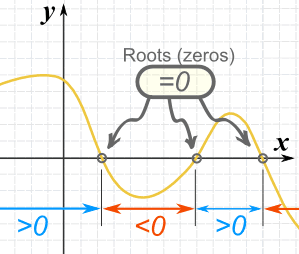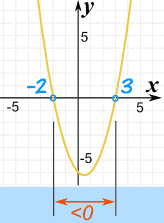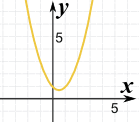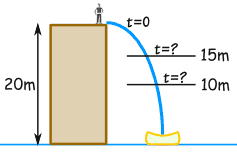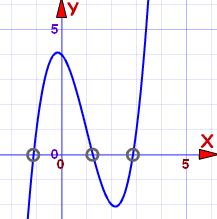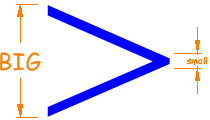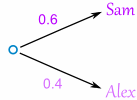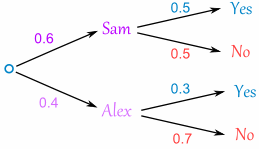Definition
What is a set? For make it easier to
understand me make it simple, set just like collection. We need to specify
common property among the things and we gather up all the things that have this
common property.
First we need to specify a common
property of the "things" (this word will be defined later) and then
we gather up all the "things" that have this common property.
Example of set the items you
wear: shoes, socks, hat, shirt, pants, and so on. It just been grouped
together.
Notation
. We simply list each element (or
"member") separated by a comma, and then put some curly brackets
around the whole thing:
Simply we list each element
separated by comma and we put some curly bracket around it. This is the curly
bracket “ { } “ or called “sets brackets”.
This is the notation for the two
previous examples:
{socks, shoes, watches, shirts, ...}
Numerical
Sets
If we already define a set, first we
need to specify the common
characteristic. We also can do sets in number. Set of even numbers: {..., -4,
-2, 0, 2, 4, ...}
This Set of odd numbers: {..., -3,
-1, 1, 3, ...}
This Set of prime numbers: {2, 3, 5,
7, 11, 13, 17, ...}
The Positive multiples of 3 that are
less than 10: {3, 6, 9}
There also can be sets of numbers
that not have common property, we just need to defined the way for example.
{1, 3, 6, 424, 3639, 4427}
{4, 5, 6, 5, 21}
{2, 929, 46282, 42442659, 119244203}
all sets that I just randomly banged
on my keyboard to produce.
Universal
Set
We used word “thing” and it called
universal set. Set is include integers. The universal set would be integers.
|
||||
More
Notation
We commonly use capital letter to
represent the sets and lowercase letters to represent the element in the
sets.
for example, B is b set, and a is an
element in B. Same with c and c, and D and d.
|
Now you don't have to listen to the
standard, you can use something like m to represent a set without
breaking any mathematical laws (watch out, you can get π years in math
jail for dividing by 0), but this notation is pretty nice and easy to follow,
so why not?
Also, when we say an element b
is in a set b, we use the symbol  to show it.
to show it.
And if something is not in a set use
 .
.
Example: Set A is {1,2,3}. We
can see that 1  A, but 5
A, but 5  A
A
Equality
Two sets are equal if they have the
same members. Now, at first glance they may not seem equal, so we may have to
examine them closely!
Example: Are b and C equal where:
- B is the set whose members are the first four positive
whole numbers
- C = {4, 2, 1, 3}
Let's check. They both contain 1.
They both contain 2. And 3, And 4. And we have checked every element of both
sets, so: Yes, they are equal!
And the equals sign (=) is used to
show equality, so we write:
A
= B
this the video for set:
Introduction to Sets
Subsets
When we define a set, if we take
pieces of that set, we can form what is called a subset.
So for example, we have the set {1,
2, 3, 4, and 5}. A subset of this is {1, 2, and 3}. Another subset is
{3, 4} or even another, {1}. However, {1, 6} is not a subset, since it contains
an element (6) which is not in the parent set. In general:
A
is a subset of B if and only if every element of A is in B.
So let's use this definition in some
examples.
Is
A a subset of B, where A = {1, 3, 4} and B = {1, 4, 3, 2}?
1 is in A, and 1 is in B as well. So
far so good.
3 is in A and 3 is also in B.
4 is in A, and 4 is in B.
That's all the elements of A, and
every single one is in B, so we're done.
Yes,
A is a subset of B
Note that 2 is in B, but 2 is not in
A. But remember, that doesn't matter, we only look at the elements in A.
Let's try a harder example.
Example:
Let A be all multiples of 4 and B be all multiples of 2. Is A a subset of B?
And is B a subset of A?
We can’t check every element of set.
We need to get an idea of what the element look like in each then we compare
them all.
The sets are:
- A = {..., -8, -4, 0, 4, 8, ...}
- B = {..., -8, -6, -4, -2, 0, 2, 4, 6, 8, ...}
By pairing off members of the two
sets, we can see that every member of A is also a member of B, but every member
of B is not a member of A:
So:
A
is a subset of B, but B is not a subset of A
Proper
Subsets
we need to look at the definition of
subset.
Let A be a set. Is every
element in A an element in A? (Yes, I wrote that
correctly.)
Well,
umm, yes of course, right?
So doesn't that mean that A is
a subset of A?
This seen not proper yet, so we
change the subset to be proper using proper subsets
A is a proper subset of B if
and only if every element in A is also in B, and there exists at least one
element in B that is not in A.
This little piece at the end is only
there to make sure that A is not a proper subset of itself. Otherwise, a proper
subset is exactly the same as a normal subset.
Example:
{1, 2, 3} is a subset of {1,
2, 3}, but is not a proper subset of {1, 2, 3}.
Example:
{1, 2, 3} is a proper
subset of {1, 2, 3, 4} because the element 4 is not in the first set.
Notice that if A is a proper subset
of B, then it is also a subset of B.
Even
More Notation
When we say that A is a subset of B,
we write A  B.
B.
Or we can say that A is not a subset
of B by A  B ("A is not a subset of
B")
B ("A is not a subset of
B")
When we talk about proper subsets,
we take out the line underneath and so it becomes A  B or if we want to say the
opposite, A
B or if we want to say the
opposite, A  B.
B.
Empty
(or Null) Set
This is little bit weird and also
make little bit confuse.
As an example, think of the set of
piano keys on a guitar.
"But
wait!" you say, "There are no piano keys on a guitar!"
And right you are. It is a set with no
elements.
This is known as the Empty Set
(or Null Set).There aren't any elements in it. Not one. Zero.
It is represented by 
Or by {} (a set with no
elements)
Some other examples of the empty set
are the set of countries south of the south pole.
So what's so weird about the empty
set? Well, that part comes next……
Empty
Set and Subsets
So l back to our definition of the subsets.
For example,we have a set A. We won't define it any more than that, it could be
any set. Is the empty set a subset of A?
Going back to our definition of
subsets, if every element in the empty set is also in A, then the empty set
is a subset of A. But what if we have no elements?
It takes an introduction to logic to
understand this, but this statement is one that is "vacuously" or
"trivially" true.
A good way to think about it is: we
can't find any elements in the empty set that aren't in A, so it must be
that all elements in the empty set are in A.
So the answer to the posed question
is a resounding yes.
The
empty set is a subset of every set, including the empty set itself.
Order
No, not the order of the elements.
In sets it does not matter what order the elements are in.
Example: {1, 2, 3, 4} is the same
set as {3, 1, 4, 2}
When
we say "order" in sets we mean the size of the set.
Just as there are finite and
infinite sets, each has finite and infinite order.
For finite sets, we represent the
order by a number, the number of elements.
Example, {10, 20, 30, 40} has an
order of 4.
For infinite sets, all we can say is
that the order is infinite. Oddly enough, we can say with sets that some
infinities are larger than others, but this is a more advanced topic in sets.
